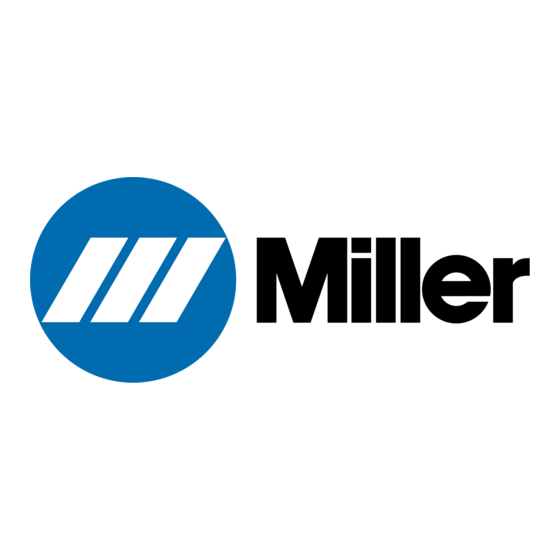Miller SMITH EQUIPMENT HANDI-HEET Manual do Proprietário - Página 4
Procurar online ou descarregar pdf Manual do Proprietário para Lanterna Miller SMITH EQUIPMENT HANDI-HEET. Miller SMITH EQUIPMENT HANDI-HEET 24 páginas. Acetylene/atmospheric air torch systems

.
In this document, the phrase "welding and cutting" also refers to oth-
er oxy-fuel operations like brazing and heating.
READ INSTRUCTIONS.
D
Read and follow all labels and the Owner's Manual carefully be-
fore installing, operating, or servicing equipment. Read the safety
information at the beginning of the manual and in each section.
D
Use only genuine replacement parts from the manufacturer.
D
Perform installation, maintenance, and service according to the
Owner's Manuals, industry standards, and national, state, and
local codes.
HOT PARTS can burn.
D
Do not touch hot parts bare handed.
D
Allow cooling period before working on equipment.
D
To handle hot parts, use proper tools and/or wear heavy, insu-
lated welding gloves and clothing to prevent burns.
FUMES AND GASES can be hazardous.
Welding and cutting produces fumes and gases. Breathing these
fumes and gases can be hazardous to your health.
D
Keep your head out of the fumes. Do not breathe the fumes.
D
Ventilate the work area and/or use local forced ventilation at the
flame to remove welding and cutting fumes and gases. Some gases
(natural gas and acetylene) are lighter than air and will collect in high
areas. Other gases (propane and butane) are heavier than air and
will collect in low areas. Heavier-than-air gases are more difficult to
diffuse and are more likely to accumulate. The recommended way
to determine adequate ventilation is to sample for the composition
and quantity of fumes and gases to which personnel are exposed.
D
If ventilation is poor, wear an approved air-supplied respirator.
D
Read and understand the Safety Data Sheets (SDSs) and the
manufacturer's instructions for adhesives, coatings, cleaners,
consumables, coatings, cleaners, degreasers, fluxes, and met-
als.
D
Work in a confined space only if it is well ventilated, or while
wearing an air-supplied respirator. Always have a trained watch-
person nearby. Welding and cutting fumes and gases can dis-
place air and lower the oxygen level, causing injury or death. Be
sure the breathing air is safe. Test atmospheres in confined areas
for explosive and toxic gases before using oxy-fuel equipment.
D
Do not weld or cut in locations near degreasing, cleaning, or
spraying operations. The heat from welding or cutting flame can
react with vapors to form highly toxic and irritating gases.
D
Do not weld or cut on coated metals, such as galvanized, lead, or
cadmium-plated steel unless the coating is removed from the af-
fected area, the area is well ventilated, and while wearing an air-
supplied respirator. The coatings and any metals containing
these elements can give off toxic fumes if welded or cut.
D
Do not weld or cut on sealed air conditioning or refrigeration sys-
tems unless all refrigerants have been removed from the system.
OM-263687 Page 2
